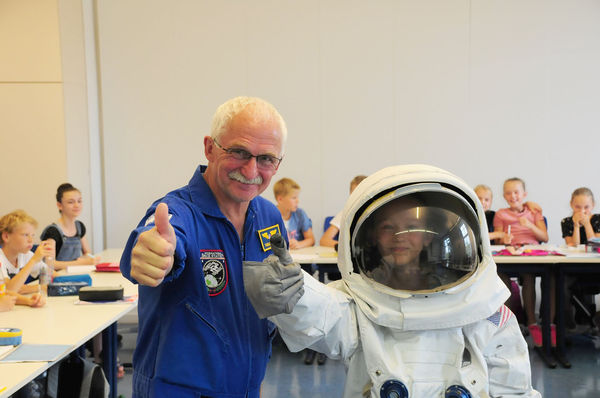Presentations and Lectures
For 21 years, I gave lectures on the history of technology at Mittweida University of Applied Sciences, or rather the history of space travel. Unfortunately, I was no longer allowed to do this after reaching retirement age and was politely dismissed. Nevertheless, and even more so, I always feel good when I can pass on my knowledge, especially to young people. I do this not only in my museum, but also in schools, at exhibitions and, on invitation, also at your place. The topics are very varied and cannot all be covered here. So here are a few examples of what I offer:
The moon landing. Myths and facts
Could it have been otherwise?
What was it like when Neil Armstrong and Buzz Aldrin were the first to set foot on the moon on July 20, 1969? The world was thrilled. But the Soviets actually wanted to steal the show from the Americans. On the same day, the automatic probe “Luna 15” was supposed to land and bring back moon rocks! But it tipped over. And then the Russian moon rocket “N-1” exploded and the two cosmonauts Leonov and Makarov and others had trained for the moon for nothing.
The author spoke to many of those involved (astronauts, cosmonauts, engineers...) and carried out his own research. So the lecture will certainly be very exciting.
(90 minutes PowerPoint with lots of hardware plus possibly even real moon dust)
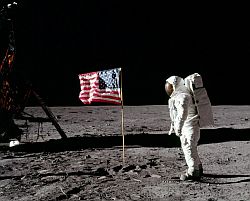
Were we really on the moon?
Again and again there are conspiracy theories, so also to the manned moon landings. And some things seem to need some explanation.
Is it really so that the USA flag blows in the wind, which cannot exist on the moon at all? What about the shadows, the temperatures and strange light sources? Was it really possible to leave the earth with the technology of that time? Is it necessary to look at all the "forgeries" individually or do some knowledge of history, logic and physics help?
The author has spoken with moon astronauts as well as with technicians of the ground control in Houston, but also with the Russian side, which would have liked to conquer the moon itself at that time. A space training session in the star city near Moscow gave him the impression of how to move on the moon in a space suit. Countless interviews, some hardware (like real moon dust!) and more than 50 years of experience in space travel provide a solid basis for a certainly not boring PowerPoint presentation.
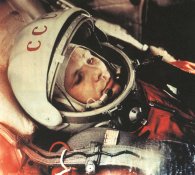
Juri Gagarin - Triumph and tragedy
More than 60 years after a man dared to climb into a small spaceship and leave the earth for 108 minutes, speculation is still rife. Was Gagarin really the first? How did the world-famous hero live? Did he get rich back then? What else did he have planned? And above all: why did he crash just seven years after his mission?
The author has been researching the subject for almost 50 years, interviewing numerous contemporary witnesses, including cosmonauts, his wife and many of his comrades-in-arms. And he has visited places where the cosmonaut worked: Baikonur, where he took off, Smelovka, where he landed, the little star town where he lived and worked, the crash site near Novoselevo or places he visited.
The author also repeatedly talks about the subject in his lectures and in his museum. In the ambivalent Peenemünde, where modern rocket technology began, Mr. Römisch created a Gagarin exhibition with over 250 objects. This had almost 120,000 visitors. Later exhibitions were added in Berlin and other places. He has processed all this into this lecture, which certainly contains a lot of new information and portrays Gagarin in his time under all the complicated political and technical circumstances.
Duration of presentation (PowerPoint): approx. 75 to 90 minutes
Technology required: projector, small table, microphone + amplifier if necessary
Hardware to marvel at (if not currently on the road at exhibitions): SK-1 training glove, soil from the landing site, first Gagarin photo on the ISS, memorabilia...
Sigmund Jähn. The first German in space. A personal view
The lecture paints a picture of the man and not just the cosmonaut in pictures and information that are often quite unique.
The speaker, Tasillo Römisch, knew Sigmund Jähn (and his wife Erika) himself, but also Eberhard Köllner (the “double”), Valery Bykowski (†), Viktor Gorbatko (†) , and most of those involved at the time personally for more than four decades. The events after Sigmund's death are not left out either.
He has attended countless events with many of those involved, was allowed to look “behind the scenes” during reciprocal visits and brought astonishing things to light.
(Powerpoint 70-90 minutes, original documents and objects included)
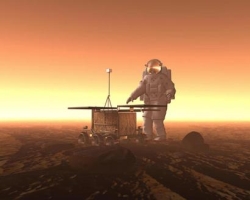
To Mars instead of Mallorca?
Space tourism has long since begun
The next destination for mankind (after the moon) will certainly be Mars. With only a third of the Earth's gravity, it would be a good place to settle in. But what awaits us there, quite apart from living below the surface? Are there really worthwhile tourist destinations? And if so, when will the time finally come and do I have to start saving now?
Yes, of course, the tourists so far have mostly been billionaires who have taken off to the ISS or on individual flights. But can't it be cheaper? For “only” 300,000 dollars with “New Shepard”? And what will happen when Elon Musk offers his “Starship” as a space cab?
Weightlessness and the view of our blue planet from above as an amusement for the super-rich or (much later) mass tourism? Is this morally and ethically justifiable or perhaps an expensive mistake?
(Powerpoint 90 minutes, some hardware included)
To the stars of no return
In memory of the good dog Laika, who was the first living being in space.
An essential part of the Cold War was the race into the cosmos, which began in 1957. The “Sputnik shock” had hit the USA hard. Nobody had believed that the Russians, who were considered backward, would be the first to launch a satellite. However, the Soviet leadership quickly recognized the propaganda value of space travel and constantly demanded new “pioneering achievements”.
And so it was decided at short notice not to transmit the national anthem from the cosmos to earth, but to sacrifice a living being.
Allegedly, the dog was “painlessly poisoned” after a few days, but today we know better. In general, more and more facts are emerging about animal experiments - including those in the USA - that are worth publishing.
The author, who has been working in space travel since 1969, takes his audience behind the scenes of this time and follows the red thread beyond the first manned missions.
Powerpoint lecture, approx. 60 - 90 minutes plus discussion.
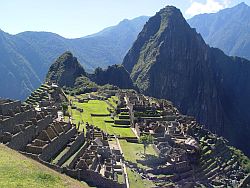
Message to the gods. Evidence in Peru?
Cuzco, Nazca, Maccu Piccu
Tasillo Römisch has another hobby: visiting places where Erich von Dänicken believes that aliens (anchient astronauts) were at work. Easter Island, Palenque, Baalbek, Malta, the pyramids of Giza... Not all his experiences are available as a lecture, but one should be mentioned here:
The author has flown over the giant images of the Nazca plain, visited ancient Inca cities and climbed gigantic stone blocks. He has also been introduced to the legacy of Maria Reiche on site. Should this really be the work of extraterrestrials or could it not also be explained “quite earthly”? But the most important thing: the many contacts with the people in Peru. This is how history comes alive.
Powerpoint 90 minutes
Keynote Speakings
Are you a renowned company still looking for a suitable motivational presentation for your executives? Here he is:
I would love to be an astronaut
- What do I have to do? Good luck or many millions?
Hard training in many countries and three languages
How is this at the start and how do I behave in weightlessness?
What is there to eat "up there" and how do I use the toilet?
Great view and a worthwhile psychological effect, which has it in itself.
After the landing is not yet over...
No Powerpoint necessary, just a table for all the hardware and a brave man wearing a space suit!
If desired: trying Space Food together (time window between 60 and 120 minutes)
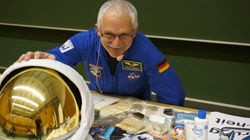
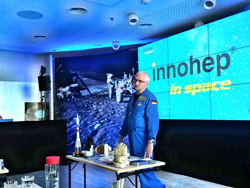

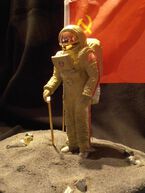
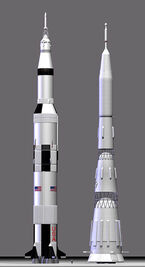
![[Translate to Englisch:] Sigmund Jähn](https://www.space-service-intl.com/fileadmin/_processed_/1/0/csm_sigmund_jaehn_368a21e660.jpg)
